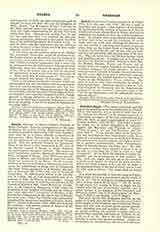

Guarda, Diocese of (EGITANIENSIS), Province of Beira, Portugal. Near the episcopal city are the ruins of Idanha, the ancient Civitas Aegiditanorum, whose ecclesiastical rank it inherited in 1199, under Sancho I, since when the see is known officially as Egiditana or Egitaniensis. Many Roman ruins in the vicinity attest the existence of a city called Igaedi in the Roman period. This see, probably founded by Theudomir, King of the Suevi, is first mentioned in 572, date of the Second Council of Braga, at which Adoricus, the contemporary occupant, assisted. His successors were Commundus, Licerius, Montensis, Armenius, and Sclua, suffragans of Braga. After 666 the see was suffragan to Merida, and continued so until 715, when Aegidi was destroyed by the Moors. On the reestablishment of the see at Guarda a controversy arose between the Archbishops of Braga and of Compostela (the latter being administrator of Merida); the decision of Innocent III (1198-1216) was in favor of Compostela. In 1490 Guarda passed to the jurisdiction of Lisbon, and in 1549 surrendered part of its territory to form the Diocese of Portalegre. Among its noteworthy bishops were Sclua, who assisted at the Council of Merida in 666; Vasco Martins de Alvelha, who, at the Council of Salamanca (1310) urged the absolution of the Templars of Castile, and the celebration “with solemnity” (solemniter) of the feast of the Immaculate Conception on the eighth day of December every year; Pedro Vaz Gaviao, who successfully completed the sumptuous cathedral of Guarda (Santa Maria); Nunho de Noronha (1596-1608), who founded the seminary; and several princes or infantes of the reigning house of Portugal.
F. FITA

